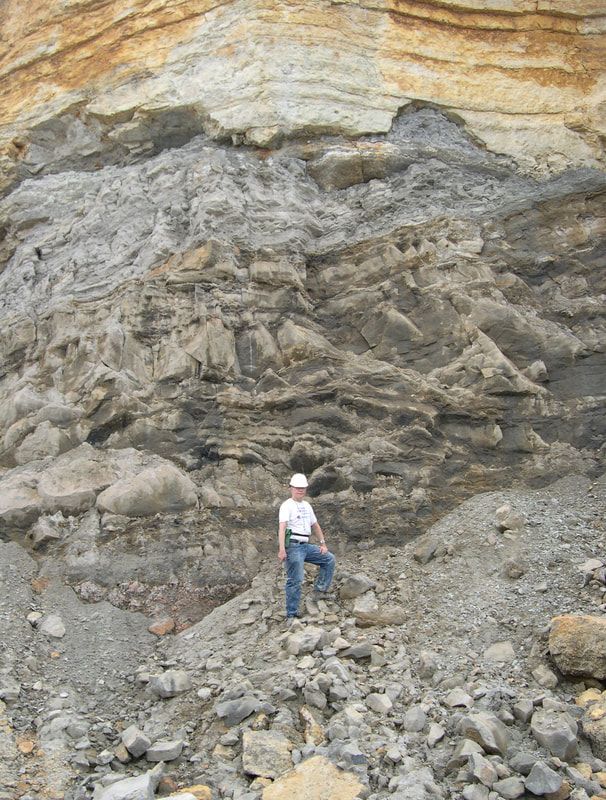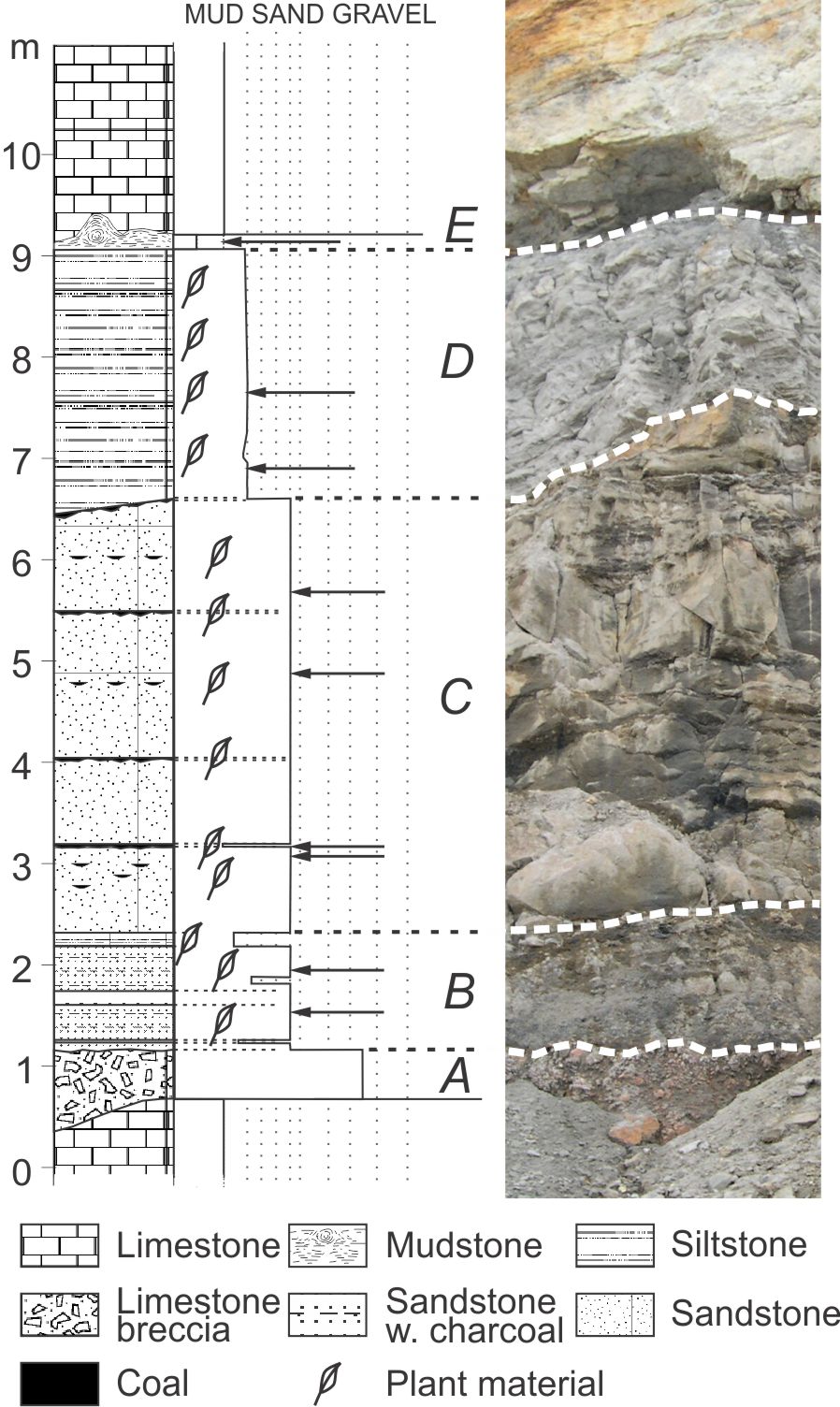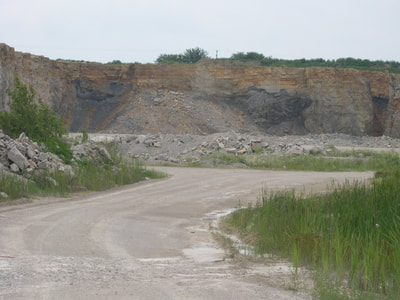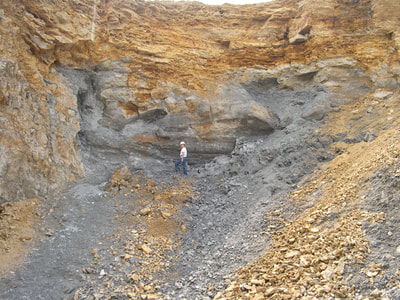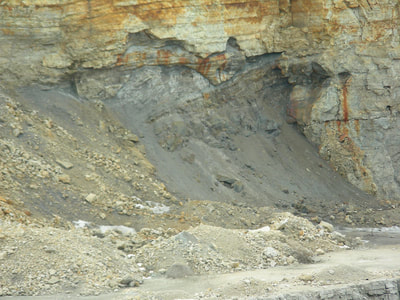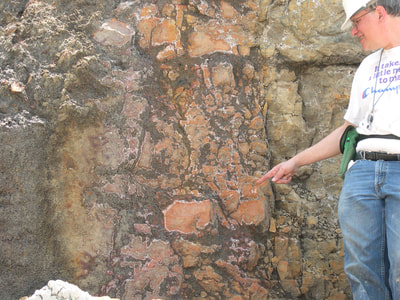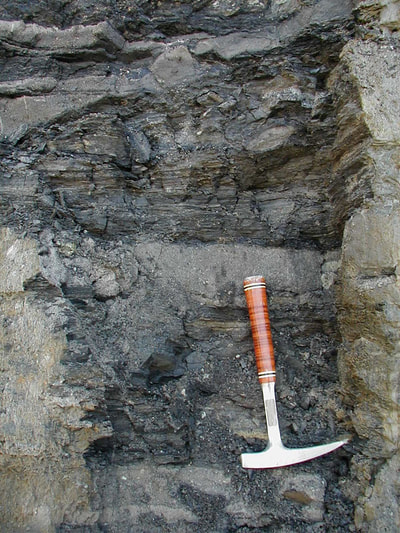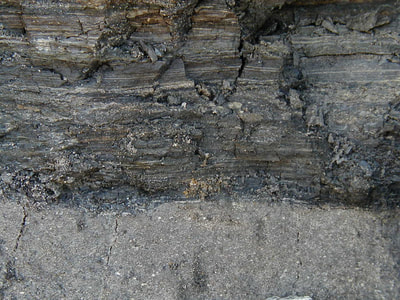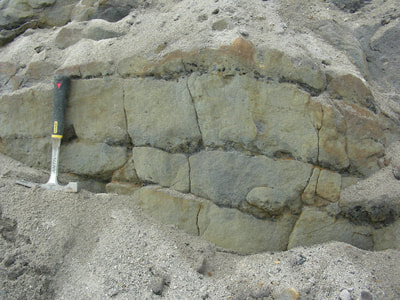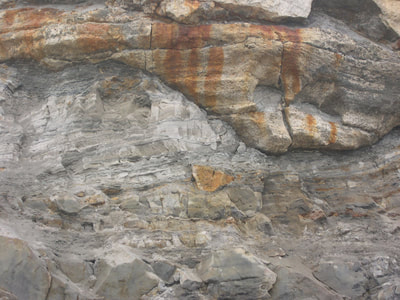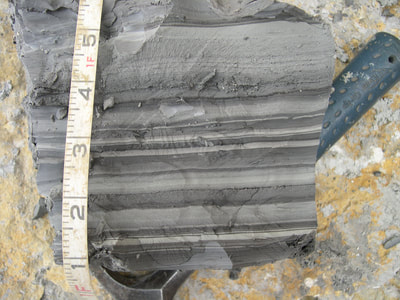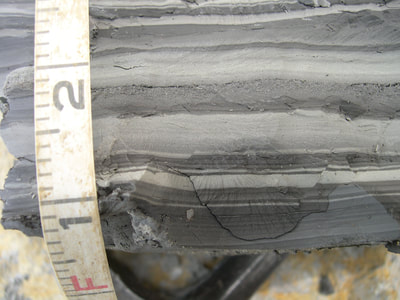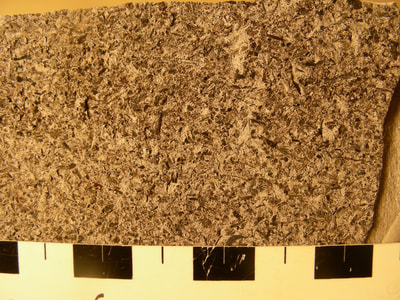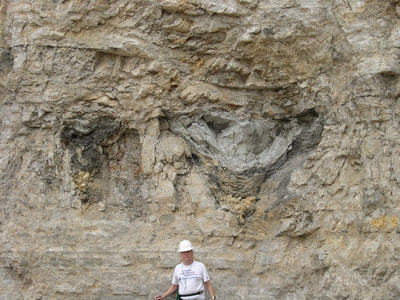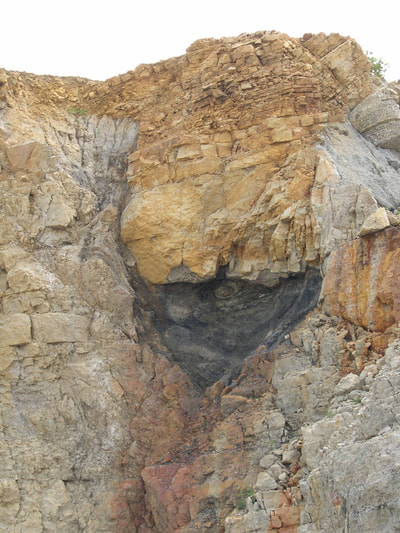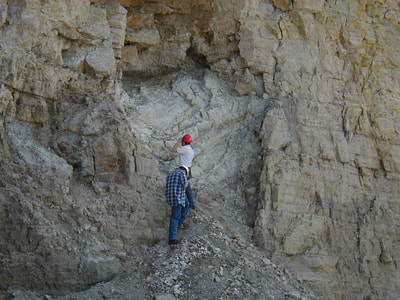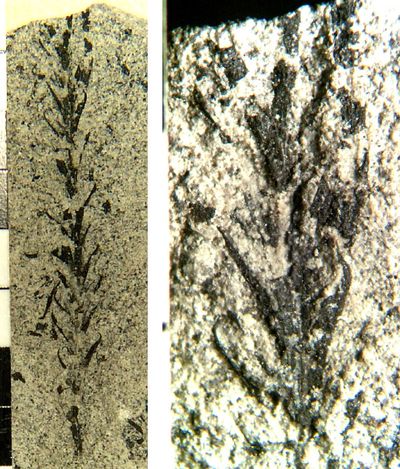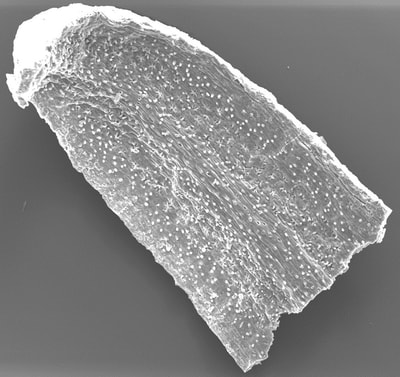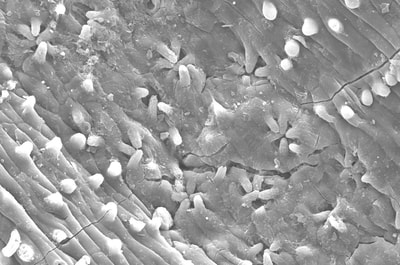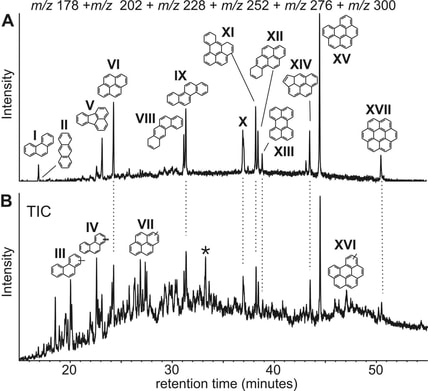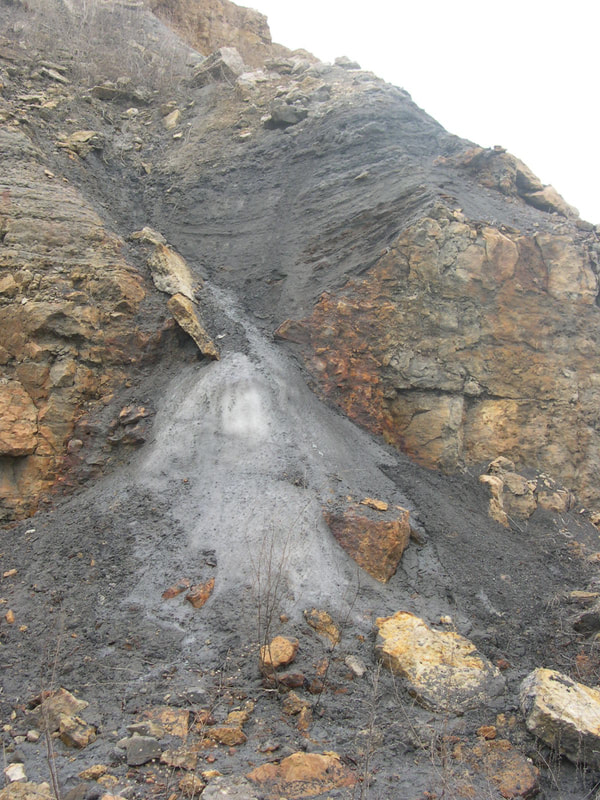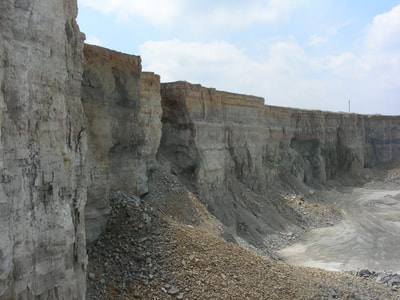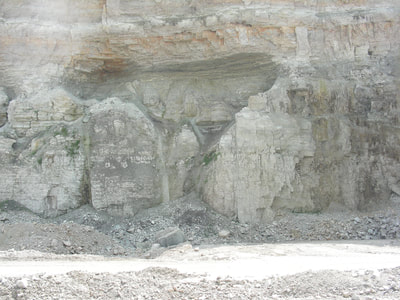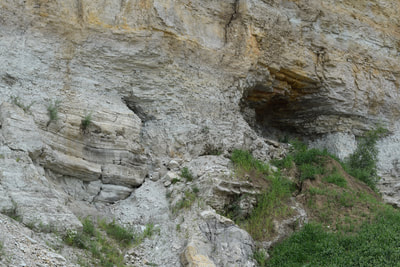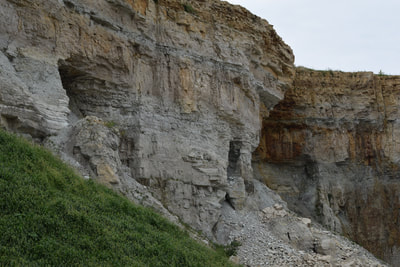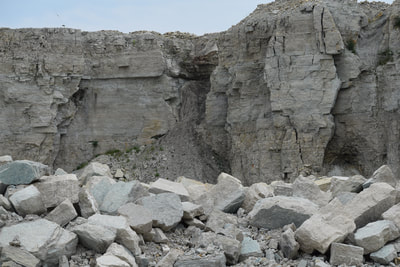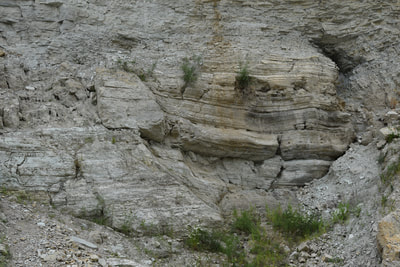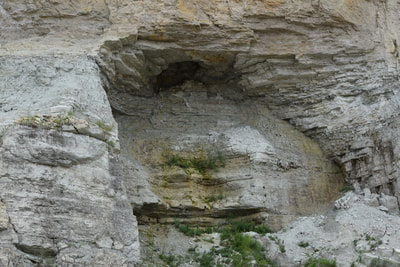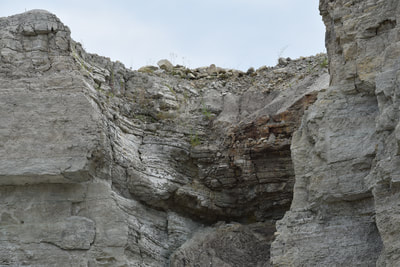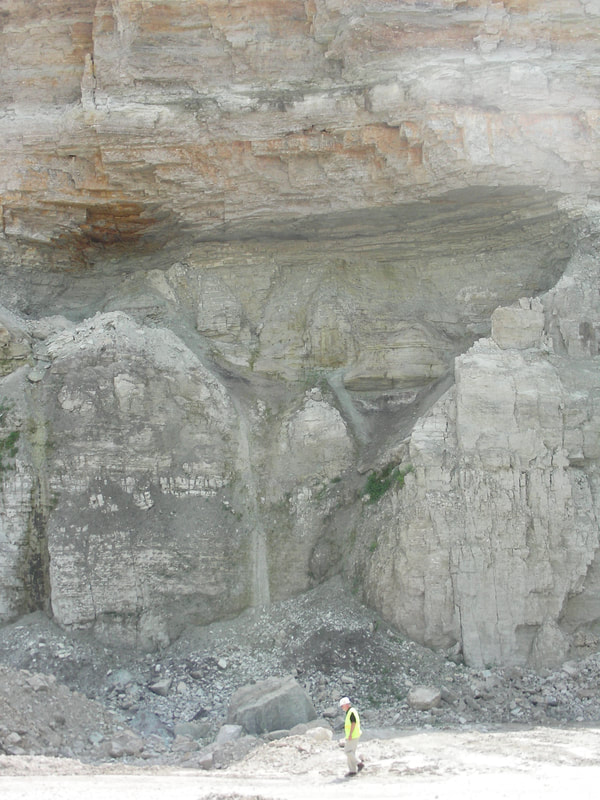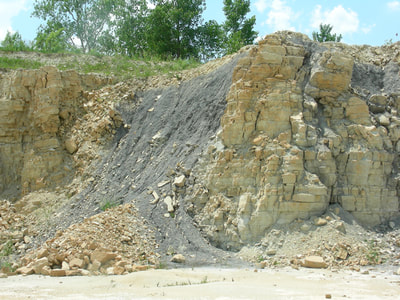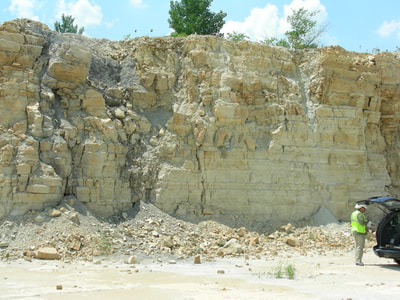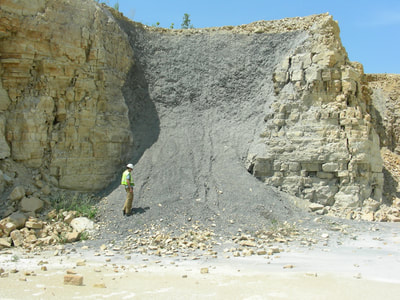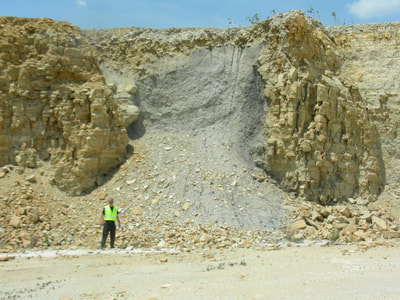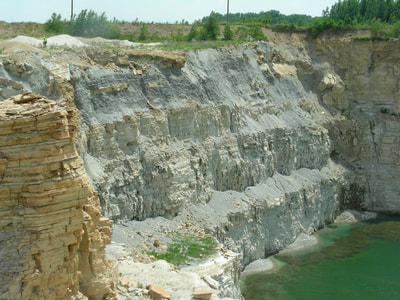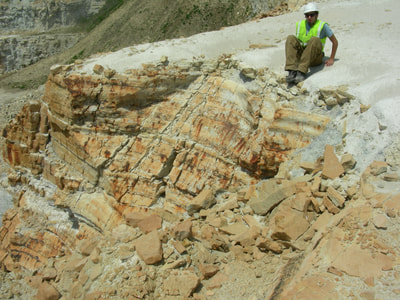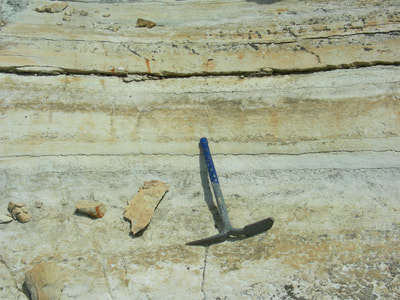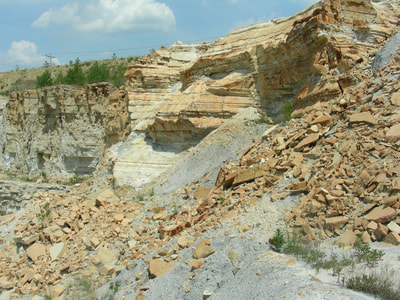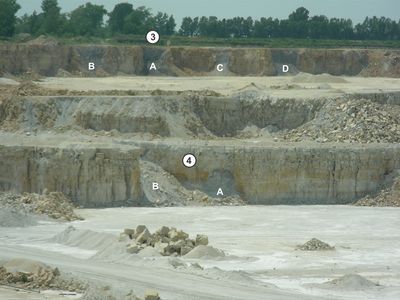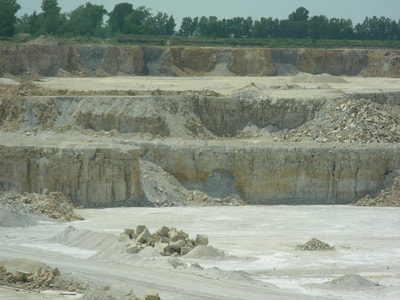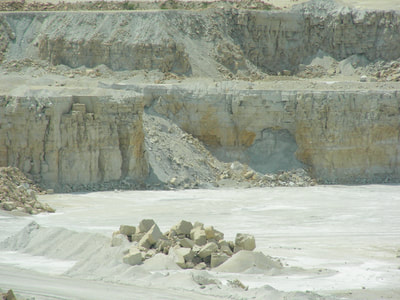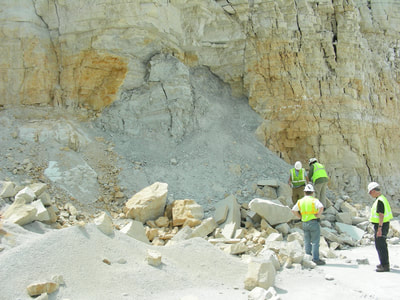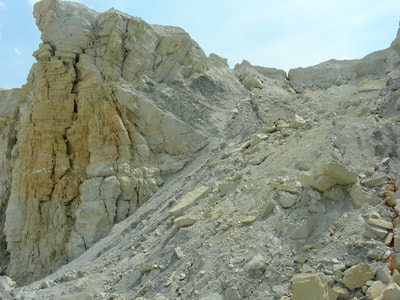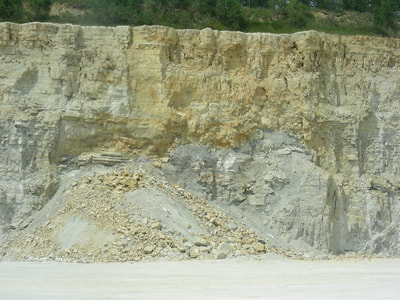The Paleokarsts and Cavefills project is driven by Roy Plotnick (UIC) and Fabien Kenig (UIC) with the collaboration of Andrew Scott (Royal Holloway, UK) and Ian Glasspool (FMNH at the time; now Colby College). This project led to many publications in the field of paleobotany, stratigraphy, and paleobiogeochemistry because of the excellent uncompressed preservation of plant fossils and the remarkable preservation of plant and arthropod tissues. The publications derived from this project are listed at the bottom of this page. The project was featured in the news.
Central Limestone Co. Quarry in Central, Kendall County, Illinois, USA
Lisbon Quarry, near Central, Kendall County, Illinois (Vulcan Material)
The Lisbon quarry is situated just west of Central quarry, though they are separated by a fault. The Lisbon quarry also display paleocaves and cave fills as well as clear connection with sinkholes (dolines) in the dolomites of the Plateville Formation. When these paleocaves were observed the cave fills already fell from the high wall, forming talus. For most paleocaves, these talus were already removed by the quarry operator.
The Lisbon quarry is situated just west of Central quarry, though they are separated by a fault. The Lisbon quarry also display paleocaves and cave fills as well as clear connection with sinkholes (dolines) in the dolomites of the Plateville Formation. When these paleocaves were observed the cave fills already fell from the high wall, forming talus. For most paleocaves, these talus were already removed by the quarry operator.
Lehigh Quarry, Kankakee, Kankakee County, Illinois (Vulcan Material).
Dolines (sinkholes) at the top of the quarry are numerous on the North face of the quarry. This karst system formed in Silurian dolomites (Upper Llandoverian-Lower Wenlockian Joliet Formation) and the karst system is filled by argilaceous material of Pennsylvanian age. These dolines seem connected to a cave system that is visible on the second and third walls of the quarry. These caves are filled by clay as well. For more detail see Plotnick et al. (2014).
Dolines (sinkholes) at the top of the quarry are numerous on the North face of the quarry. This karst system formed in Silurian dolomites (Upper Llandoverian-Lower Wenlockian Joliet Formation) and the karst system is filled by argilaceous material of Pennsylvanian age. These dolines seem connected to a cave system that is visible on the second and third walls of the quarry. These caves are filled by clay as well. For more detail see Plotnick et al. (2014).
PUBLICATIONS
- Plotnick R.E., Kenig F., Scott A. C. (2014) Using the voids to fill the gaps: Caves, Time, and Stratigraphy. In: Strata and Time: Probing the gaps in our understanding. Geological Society, London, Special publications 404.
- Fraser W. T., Scott A.C., Forbes A. E. S., Glasspool I.J., Plotnick R.E., Kenig F., Lomax B.H. (2012) Evolutionary stasis of sporopollenin biochemistry revealed by unaltered Pennsylvanian spores. New Phytologist 196, 2, 397-401.
- Cody G.D., Gupta N.S., Briggs DEG, Kilcoyne, A.L.D, Summons R.E., Kenig F., Plotnick R.E., Scott A.C. (2011) Molecular signature of chitin-protein complex in Paleozoic arthropods. Geology 39, 3, 255–258.
- Scott A.C., Kenig F., Plotnick R.E., Glasspool I.J., Chaloner W.G., Eble C.F. (2010) Evidence of multiple Late Bashkirian to Early Moscovian (Pennsylvanian) fire events preserved in contemporaneous cave fills. Palaeogeography Palaeoclimatology Palaeoecology 291, 72–84.
- Plotnick R.E., Kenig F., Scott A.C., Glasspool I.j., Eble C.F., Lang W.J. (2009) Sub-Absakora paleokarst and fill: A window into Middle Pennsylvanian extrabasinal vegetation and paleoenvironments. Palaios 24, 627–637.
- Glasspool I.J., Collinson M.E., Scott A.C., Brain A.T., Plotnick R.E., and F. Kenig (2009) An ultrastructural investigation of early Middle Pensylvanian megaspores from the Illinois Basin, USA. Review of Palaeobotany and Palynology 156, 1-2, 62–78.
- Plotnick R.E., Kenig F., Scott A., and I.Glasspool (2008) Central Quarry: An exceptionally well-preserved Pennsylvanian paleocave and fill. In B. Curry ed., Deglacial history and Paleoenvironments of Northeastern Illinois.

